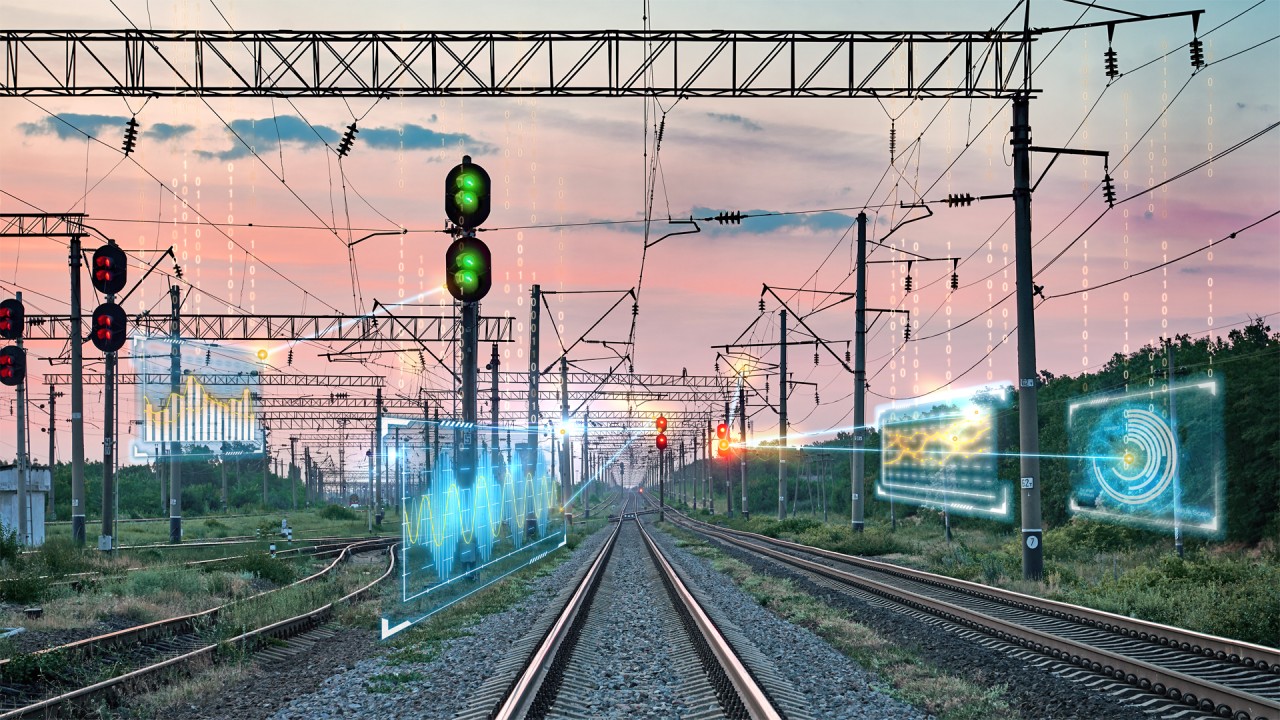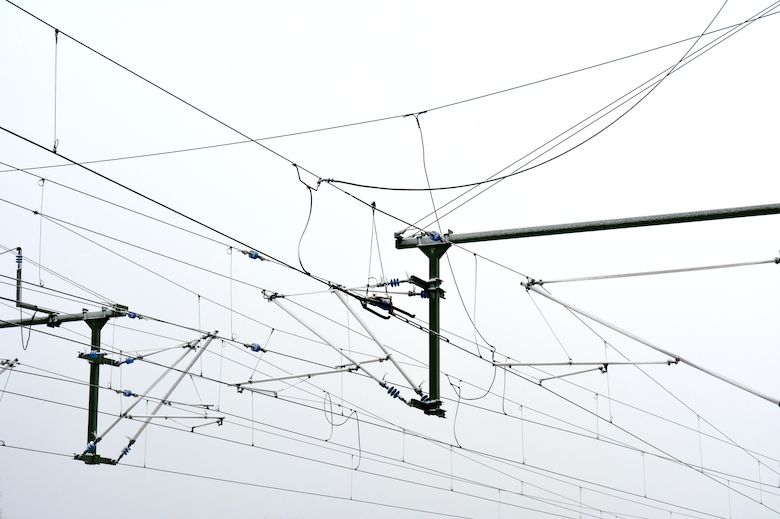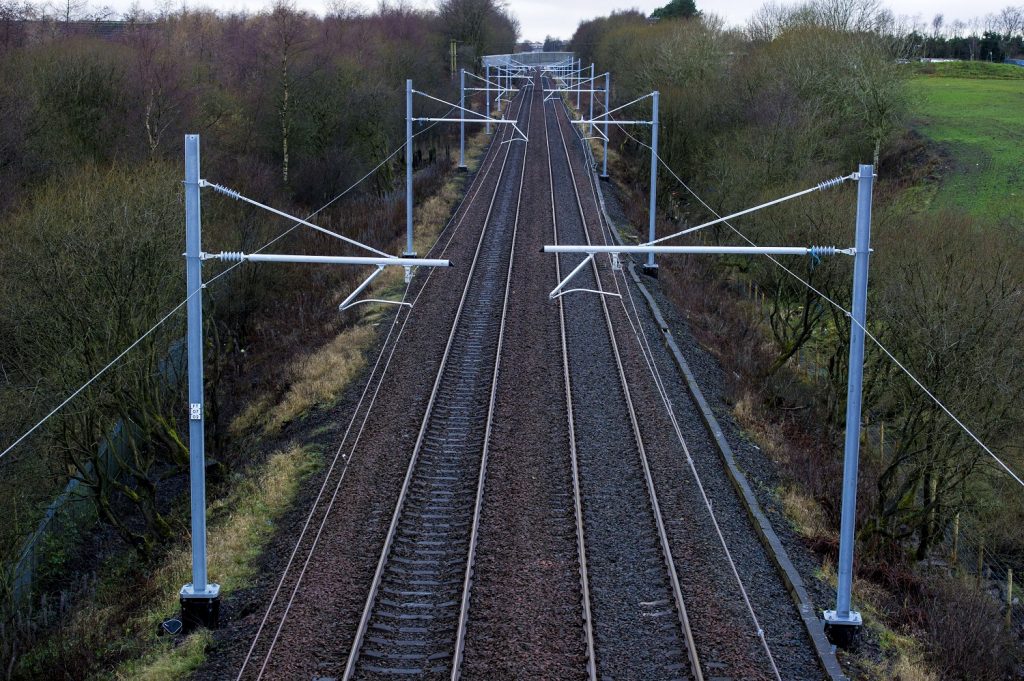Tepegöz kablolarının inşasıyla tamamlanan havai elektrik hatları, demiryolu elektrifikasyonunda kullanılan en yaygın yöntemlerden biridir. Fakat, Pille çalışan trenlere erken güven, bazı alanlarda önemli bir seçenek haline gelecektir.
Ama şimdilik, Küresel sanayileşme hızlandıkça, Yıllık karbon emisyonları çoğalmaya devam ediyor, Ve küresel ısınma trendi daha belirgin hale geliyor, Karbonizasyonun en etkili yöntemi demiryolu elektrifikasyonudur.
Demiryolu elektrifikasyonunun en iyi sonuçlarını elde etmek için, İnsanlar üçüncü ray ile havai hattı icat etti, Bugün VERI kablosu Demiryolu Elektrifikasyon Sistemini Tepe Hat Çalışma Moduna Tanıtmak İçin Tanıtıldı., onunla ilgilenmek, Lütfen okumaya devam et!

Elektrifikasyondan sonra, ortalama maliyet yaklaşık 20% Önceki elektrik ve dizel trenlerden daha düşük ve bakım maliyeti 33% Daha düşük üretim maliyeti nedeniyle daha düşük. Bu, elektrifikasyondan sonra demiryolu trenlerinin hızla büyümesini sağlayan ana odak noktalarından biridir..
Demiryolu Elektrifikasyon Sistemi Nedir?
Demiryolu elektrifikasyonu, elektrikli trenler çalıştırabilen demiryollarını ifade eder, Trenler için güç sağlamak için bu tür demiryollarının hatları boyunca elektrifikasyon ekipmanına duyulan ihtiyaç nedeniyle adlandırıldı. Elektrikli demiryolları elektrikli lokomotiflerin ortaya çıkmasıyla ortaya çıktı, enerjilerini taşımayan ve araçları sürmek için demiryolu boyunca güç kaynağı sisteminden sabit bir elektrik akışı gerektiriyor. Elektrikli lokomotifler, içten yanmalı lokomotiflere göre daha güçlü bir kapasite avantajına sahip olduğundan, Elektrikli demiryollarının nakliye kapasitesi, aynı ölçekte elektrikli olmayan demiryollarınınkini çok aşıyor, ve modern demiryollarının ana türü haline geldi.
Çeşitli durumlarda trenlerin güvenli ve istikrarlı çalışmasıyla başa çıkmak, Demiryolu elektrifikasyonunun iki ana yöntemi vardır: Biri havai çizgilerin döşenmesi orta voltaj ve yüksek voltajlı elektrik sağlamak için, diğeri ise üçüncü rayın döşenmesi, çalışan trenlere güç sağlayabilen ray olan.
Havai elektrik hatlarının elektrifikasyonu
Havai çizgiler, Genel Müadili İletişim Ağ Sistemleri olarak da bilinir, Trenlere güç sağlamak için pistin üzerinde asılı bir kablo ağı kullanın. Sistem esas olarak alternatif akımla güçlendirilir (klima) ve ana hat ve yüksek hızlı demiryolu ağlarında yaygın olarak kullanılır.
Tepegöz kabloları elektrikli demiryolu güç kaynağı ızgarasına bağlandığında, iki kategoriye ayrılırlar: esnek ve katı, ve elektrikli lokomotifler veya trainsets, havai pantograflar aracılığıyla iletişim ağına bağlayarak onlardan güç çekin.
Basit terimlerle, Trenlere güç sağlayan bu tür tepegöz ve tepegöz kablolar, yaygın olarak kullanılan yüksek voltajlı şanzıman hatlarına atıfta bulunur.

Her iki şef türü, esnek ve katı, Nihayetinde trenin normal koşu pisti boyunca devreler oluşturur. Birkaç demiryolu da dördüncü ray kullanıyor (ünlü Londra Yeraltı gibi) Mevcut bir döngü olarak.
Genel kablo elektrifikasyonunun avantajları
1. Demiryollarına yüksek voltajlı şanzıman
Tepesi hattı elektrifikasyonunun ana avantajlarından biri, Yüksek voltajlı güç iletin, tipik olarak 25 kV AC. Bu daha yüksek voltaj, uzun mesafelerde verimli iletim sağlar, Enerji kayıplarını azaltır, ve güç kaynağı trafo merkezleri arasındaki mesafeyi uzatır, böylece bina güç kaynağı istasyonlarının sayısını ve maliyetini azaltmak.
Japonya'daki ünlü Keiki hattı aldı Yüksek voltajlı şanzımanın avantajı Demiryolunun ameliyat pistinin geliştirildiği yirminci yüzyılın başlarında.
Öyleyse, Tepegöz elektrik hatları, merkezi olmayan güç kaynağına sahip demiryolları için çok uygundur.
2. Tren operasyonunun kapasitesini artırın
Demiryolu elektrifikasyonu için havai hatların bir başka avantajı, bu yüksek voltajın daha uzun ve daha ağır trenlerle uyumlu olmasıdır.. Yüksek voltajlı güç, yerleşik transformatörlere olan ihtiyacı ortadan kaldırır, bu da haddeleme stokunun ağırlığını ve maliyetini azaltır. Sırayla, Bu, trenin kapasitesini arttırır, daha fazla yolcu taşınmasına izin vermek ve operasyonel verimliliğin geliştirilmesi.

3. Çevreyi Koruma ve Tren Operasyon Güvenliği
Demiryolu elektrifikasyonu henüz ortak kullanımda olmadığında, Pille çalışan elektriğe dayanan trenlerin yıllık karbon emisyonu yüksek, küresel hava kirliliğine neden olmak. Modern toplumda, Yüksek voltajlı havai hat elektrifikasyonu veya üçüncü ray kullanımından bağımsız olarak, egzozsuz elektrik lokomotifleri, is, Havada kirlilik yok ve diğer avantajlar çok uygun.
Ek olarak, Daha az gürültünün avantajları, özellikle uzun tünellerden geçerken, daha da önemli. Bu sadece sürücünün çalışma koşullarını ve yolcu konforunu iyileştirmekle kalmaz, aynı zamanda demiryolu boyunca şehirlerde ve banliyölerde gürültü kirliliğini en aza indirir.
Elektrikli lokomotifler, uzun yokuş aşağı gradyanlarda hız ayarı için yüksek güçlü elektrikli frenlerle donatılmıştır., tren operasyonlarının güvenliğini önemli ölçüde artırabilir.
Veri kabloları ve demiryolu elektrifikasyonu
Veri Cables'ın işbirliği yaptığı birçok projede, Demiryolu sistemleri için Veri tarafından yapılan yüksek kaliteli kabloların proje sitesine geldiğini gördük, sorunsuz atılmak, Ve trenler sorunsuz bir şekilde çalışıyor, Her proje tam bir başarıdır. Modern toplumun gelişiminde her işçinin inşası olmadan bu mümkün değildir. Birlikte, Olağanüstü bir katkıda bulunuyoruz Çevrenin korunması ve insanlığın güvenli seyahati.